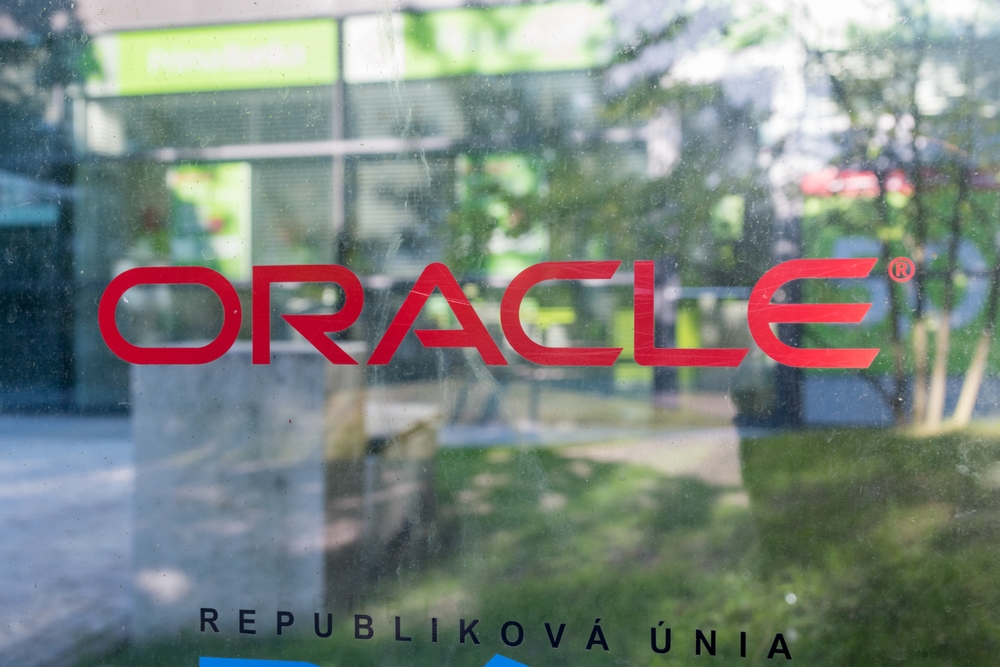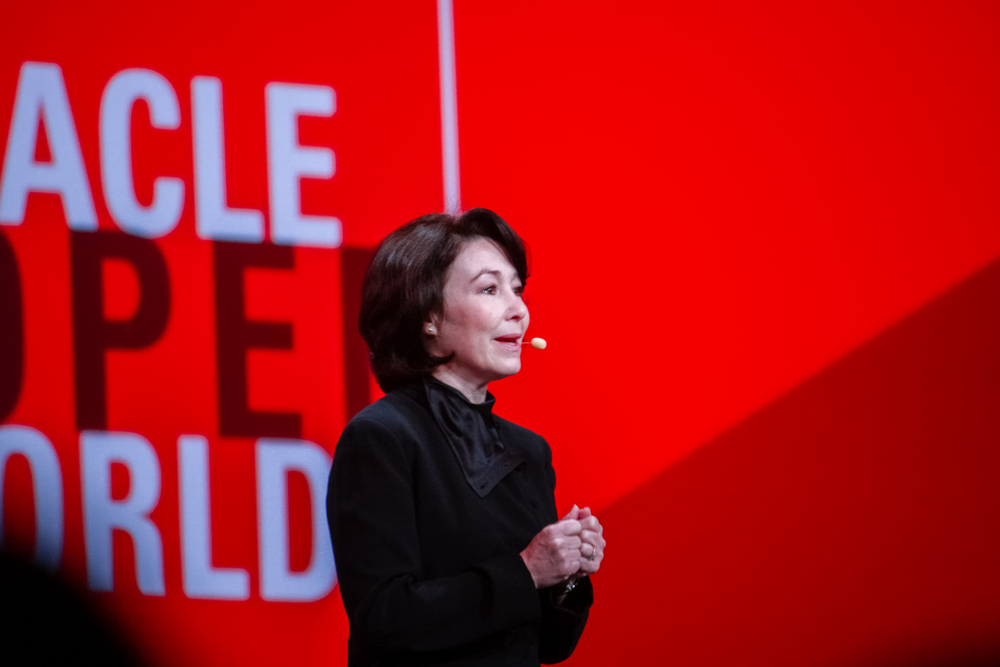#oracle
#oracle
[ follow ]
fromFast Company
5 days agoOracle stock price falls, taking Nvidia and other AI chip giants with it: Why tech are shares reeling today?
Yesterday, Oracle reported financial results for its second quarter of fiscal 2026. To say investors were disappointed in the results is an understatement, given how poorly ORCL shares are performing in premarket trading this morning. As of the time of this writing, ORCL shares are down over 12% as investors unpack its results: On the surface, the numbers look good. Non-GAAP earnings per share (EPS) were up 54% and total revenue was up 14%.
Business
fromwww.theguardian.com
5 days agoDisappointing Oracle results knock $70bn off value amid AI bubble fears
Shares in the company fell by 11.5% overnight after it reported a lower-than-expected 14% rise in revenues to $16bn (12bn) in the latest quarter while revealing it was boosting its AI spending by about $15bn. The business posted weaker-than-expected quarterly revenues for the three months to the end of November, as sales at its cloud computing business grew at a slower pace than forecast at 34%.
Tech industry
fromTheregister
6 days agoOracle raises AI spending estimate, spooks investors
Oracle expects its FY 2026 capital expenditures will be $15 billion higher that previously predicted, as the cloudy database biz invests to accommodate AI workloads. Big Red's reason for the extra spending is growth in its Remaining Performance Obligations (RPO), services its clients have contracted to consume but haven't yet paid for. During the company's fiscal Q2 2026 earnings call, Doug Kehring, Oracle Principal Financial Officer, said, "Given the added RPO this quarter that can be monetized quickly starting next year, we now expect fiscal 2026 capex will be about fifteen billion higher than we forecasted after Q1."
Business
from24/7 Wall St.
3 weeks ago2 High-Quality Tech Stocks in the Bear Bargain Bin
But that doesn't mean you should pass up on a chance to make a big swing on the bigger opportunities that fly through your strike zone. In this piece, we'll look at three great large-cap tech stocks that have already fallen far more than the rest of the market and the Nasdaq 100 and might be spared if they have already "ripped the band-aid off," so to speak.
Business
from24/7 Wall St.
1 month agoOptions Traders Flip Bearish as Oracle (ORCL) Falters
The bearish tilt in options discussions reflects real concerns that go beyond typical market gyrations: Oracle trades at a close to a 60 P/E ratio, leaving very little breathing room for any other than spectacular growth Quarterly earnings growth turned negative at -1.9% YoY, a jarring reversal among concerns about margin pressure The company faces intensifying competition in AI infrastructure from all comers. Everyone from Google (Nasdaq: GOOG) to OpenAI is building out their own massive infrastructure.
Artificial intelligence
Artificial intelligence
fromComputerWeekly.com
2 months agoAI will create a better world, says Oracle's Ellison | Computer Weekly
AI training on public data and AI reasoning on private data are Oracle's largest opportunities, with training growing fastest and reasoning offering greater private-data value.
from24/7 Wall St.
2 months agoOracle May Soon Hold the Keys to TikTok's Kingdom | ORCL Stock
With Donald Trump expected to sign a deal that will keep TikTok operating in the U.S., many have speculated who might benefit the most if/when this takes place. Among the biggest potential winners is Oracle (ORCL), with the company set to oversee the algorithm of the social media platform and keep the data protected from would-be hackers.
Silicon Valley
fromFortune
2 months agoOracle is embarking on a unique succession experiment: A company worth $870 billion run by 4 leaders | Fortune
The question arises not just because Oracle recently announced that two executives are the company's new CEOs, succeeding Safra Catz, who had been CEO or co-CEO for the past 11 years. Making the succession more intriguing, Catz has been elevated to the board of directors with a previously unheard-of title, while founder Larry Ellison continues as chairman of the board and chief technology officer, but with duties that are by no means transparent.
Business
fromTechCrunch
2 months agoOracle is reportedly looking to raise $15B in corporate bond sale | TechCrunch
Cloud infrastructure giant Oracle is looking to raise $15 billion through corporate bond sales, according to reporting from Bloomberg, citing sources. The sale could include up to seven different parts, with the potential for one said part to be an uncommon 40-year bond, Bloomberg reported. TechCrunch reached out to Oracle for more information. This report comes just a few weeks after Oracle reportedly signed a sizable deal with OpenAI to supply the AI research lab with $300 billion worth of compute.
Tech industry
Tech industry
fromFortune
2 months agoOracle's new Gen X and Millennial CEOs get stock options worth $350 million-but they'll have to keep the stock soaring to collect | Fortune
Oracle replaces CEO Safra Catz with co-CEOs Clay Magouyrk and Mike Sicilia to accelerate AI-era cloud growth, accompanied by substantial stock option grants.
fromBusiness Insider
2 months agoOracle's succession plan comes into clear view as its stock skyrockets
Oracle has appointed two new co-CEOs, as part of a succession plan put into motion months ago. Business Insider reported in June that Oracle had promoted cloud boss Clay Magouyrk and head of industries Mike Sicilia to the title of "president" as part of a succession plan, citing SEC filings and people familiar with the plans. Safra Catz, CEO since 2014, will become executive vice chair of the company's board of directors, the company announced. Larry Ellison, cofounder and former CEO, will continue as chief technology officer and executive chairman.
Tech industry
fromTechCrunch
2 months agoOracle promotes two presidents to co-CEO role | TechCrunch
Oracle is shaking up its executive suite as it sets its sights set on AI infrastructure dominance. The company announced Monday that it is promoting Clay Magouyrk and Mike Sicilia to co-CEO roles. Magouyrk joined Oracle in 2014 from Amazon Web Services. He was a founding member of Oracle's cloud engineering team and has served as the president of Oracle's cloud infrastructure business unit for more than a decade.
Artificial intelligence
fromTechzine Global
2 months agoSAP offers concessions to EU to avoid investigation
SAP has proposed concessions to the European Commission to address competition concerns. The German company hopes that these proposals will prevent a costly investigation. This is according to sources at Reuters. Without an agreement, the company risks a fine of up to 10 percent of its annual global turnover. For a company the size of SAP, that could amount to several billion euros.
Miscellaneous
from24/7 Wall St.
3 months agoStock Market Live September 16: Good TikTok News Boosts Oracle, and the Whole S&P 500 (VOO)
This article will be updated throughout the day, so check back often for more daily updates. Further details are leaking out regarding the weekend negotiations between U.S. and Chinese trade representatives, especially as regards the future (or lack thereof) of TikTok in America. According to one report, Oracle ( NYSE: ORCL) may lead a consortium of U.S. companies that would acquire TikTok's U.S. operations to enable the currently-Chinese-owned video sharing company to continue operating in the U.S.
US news
[ Load more ]




































